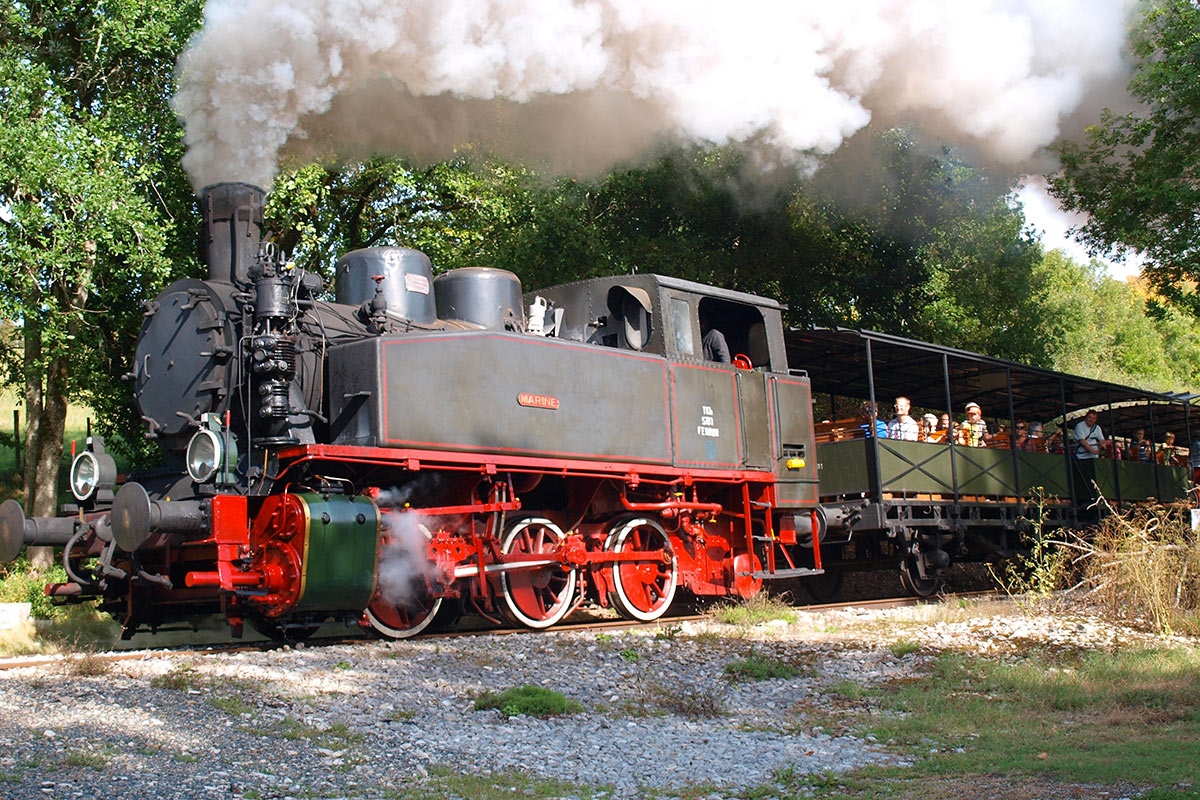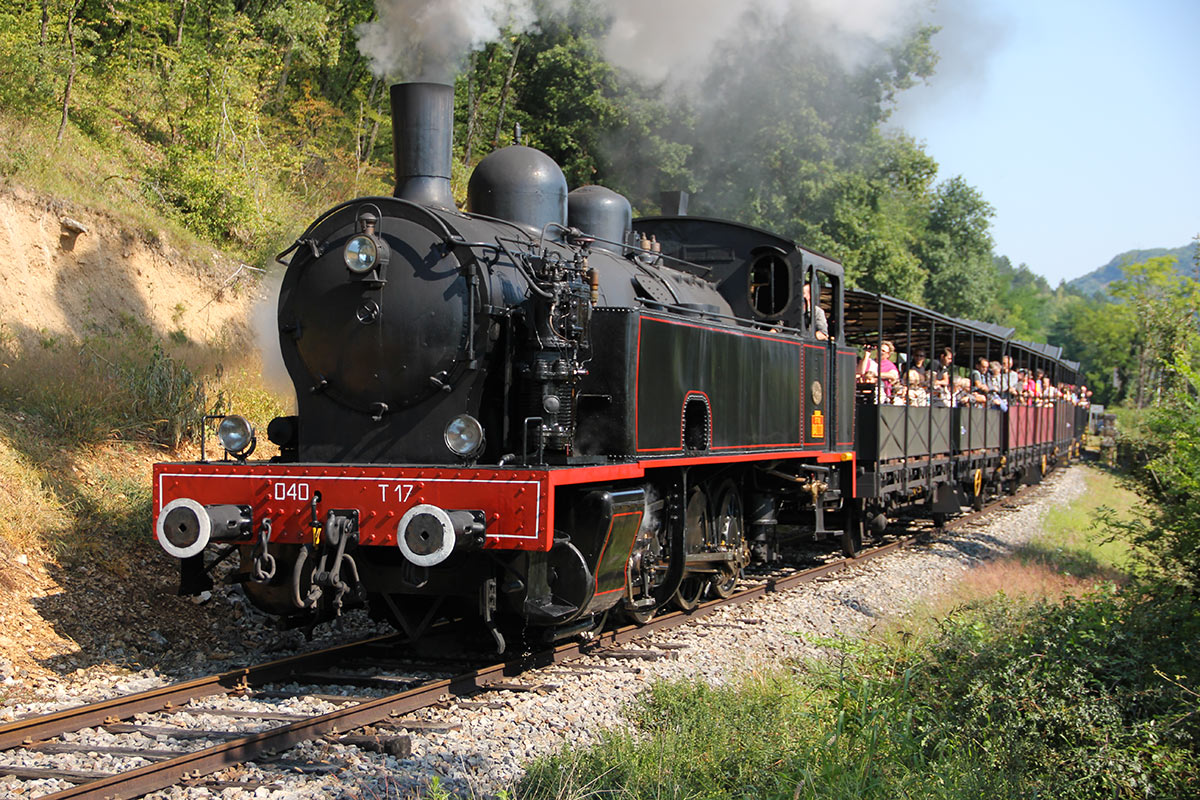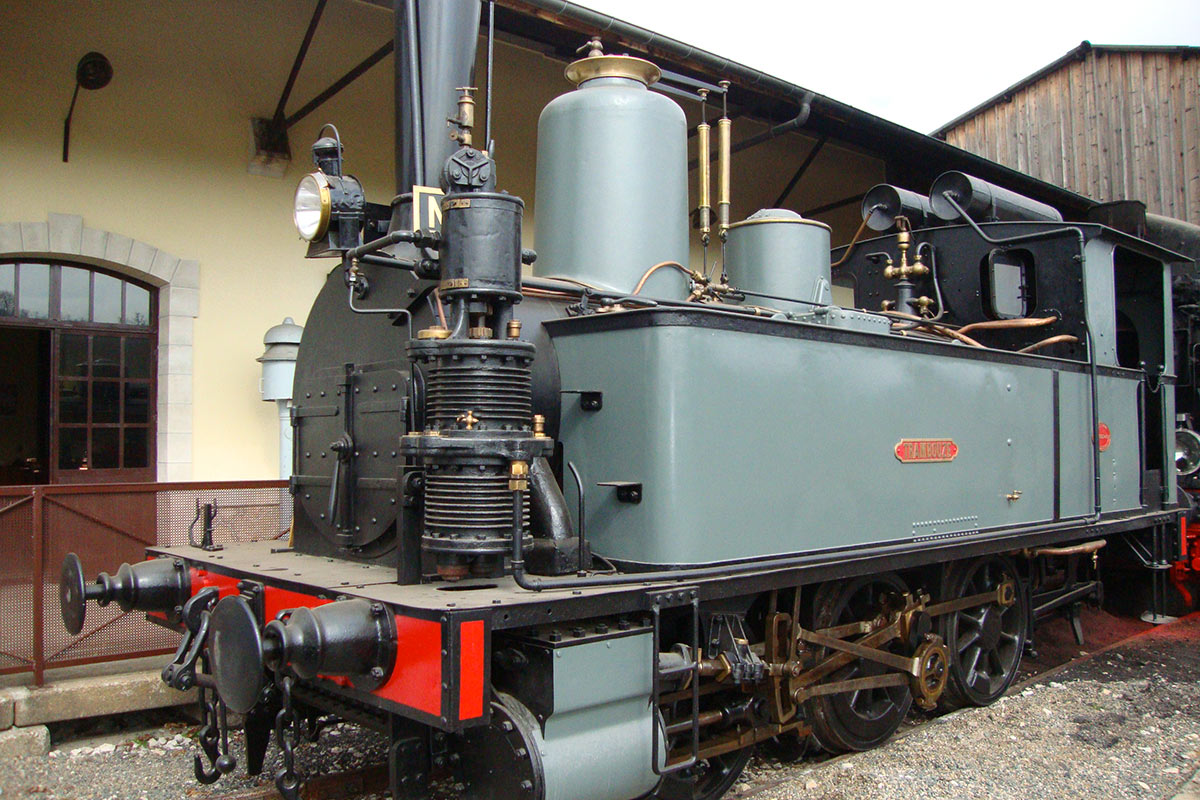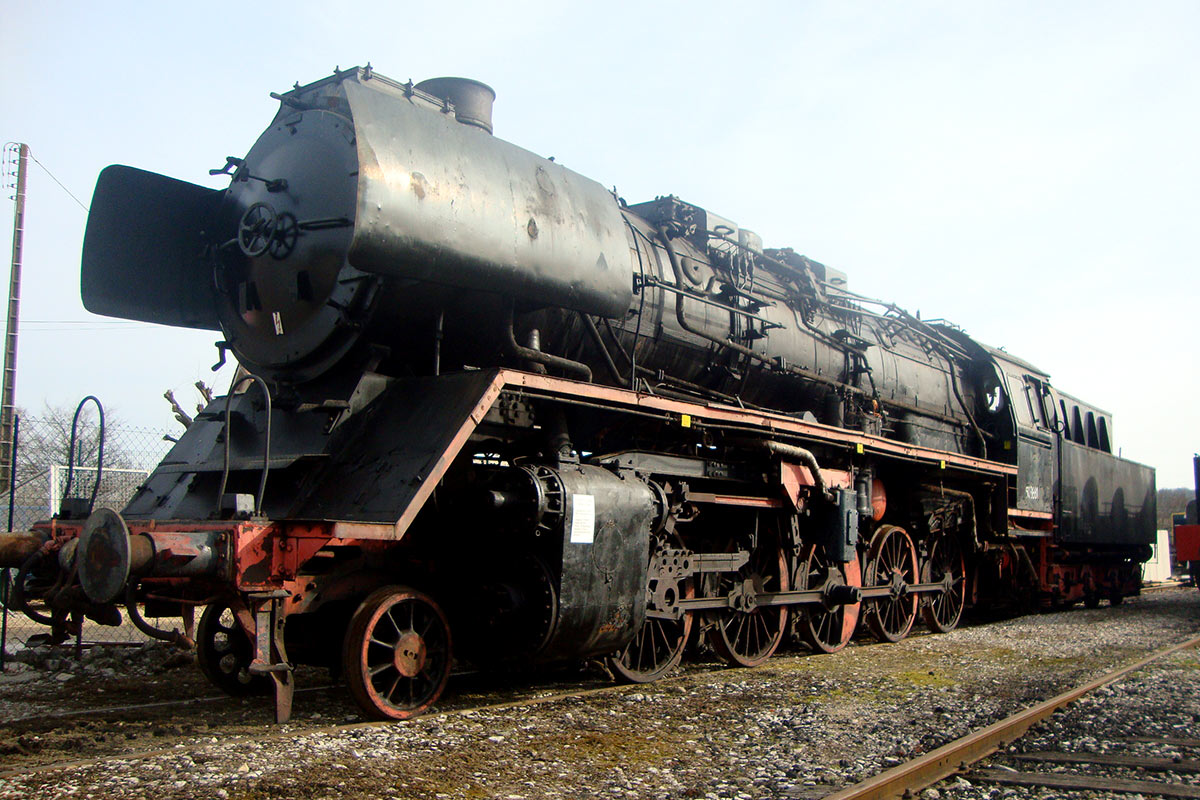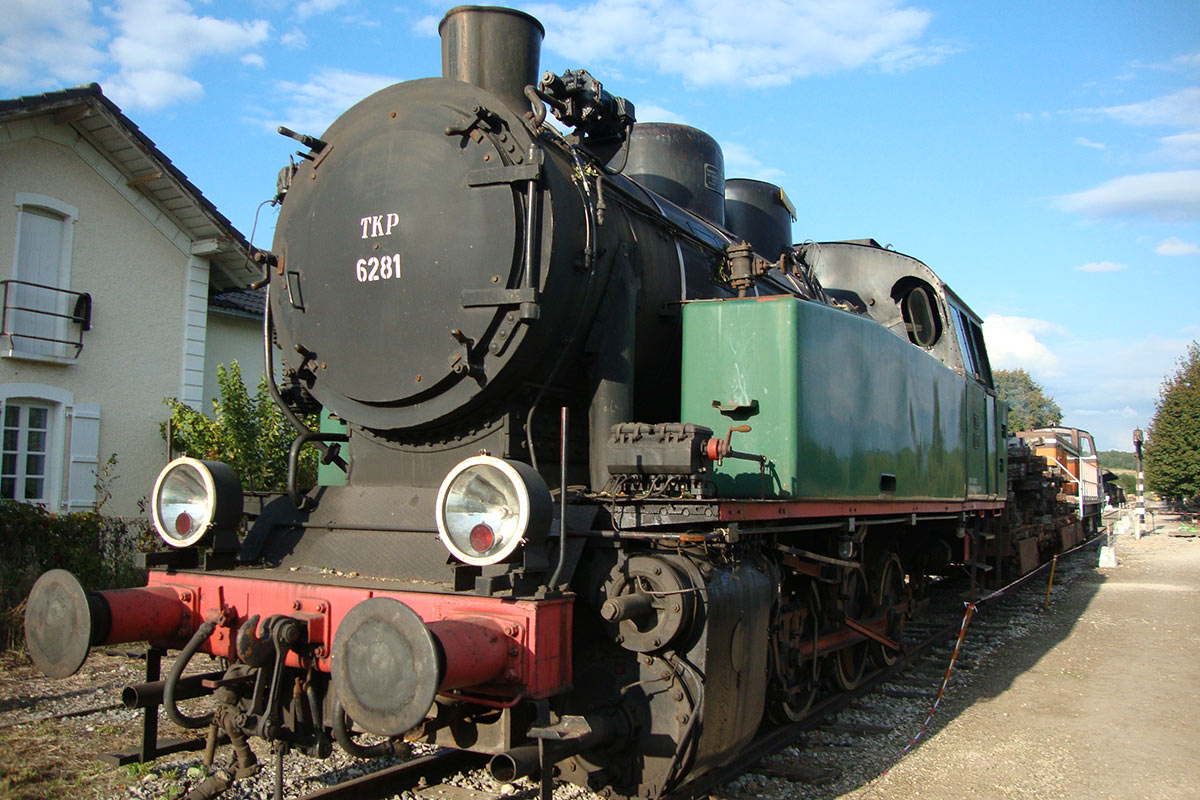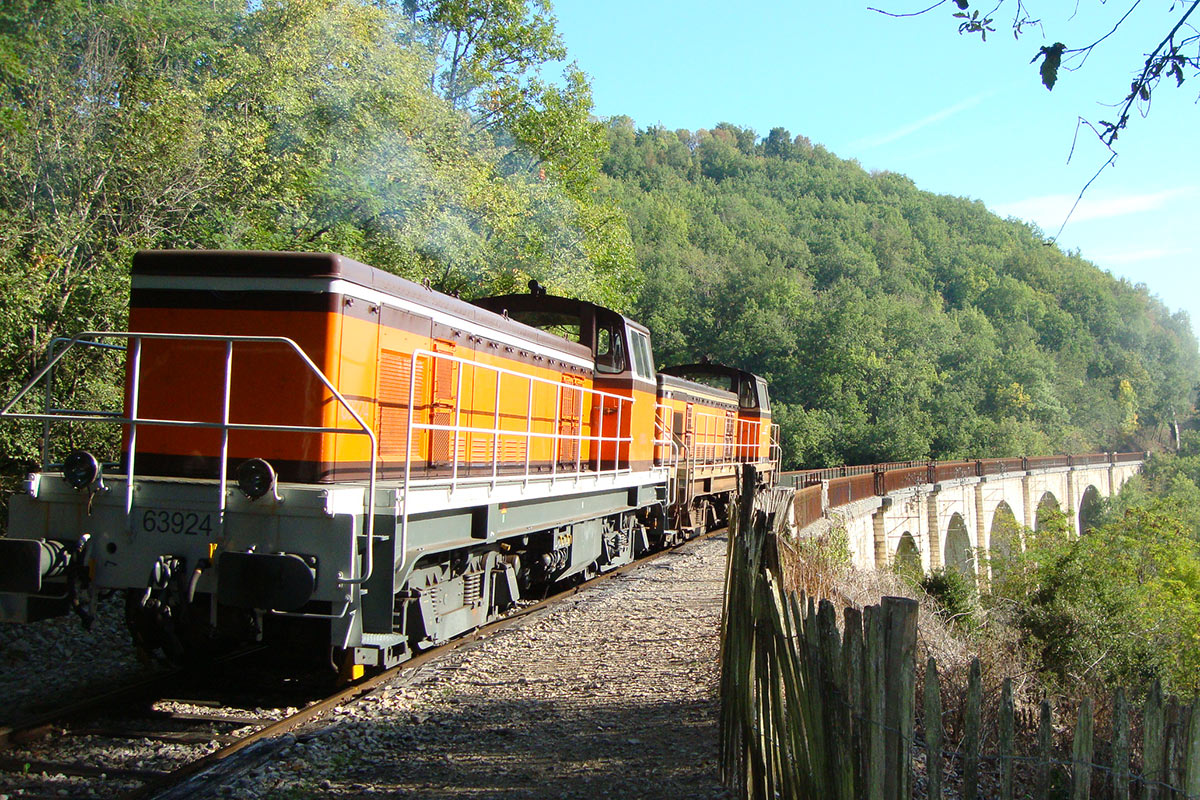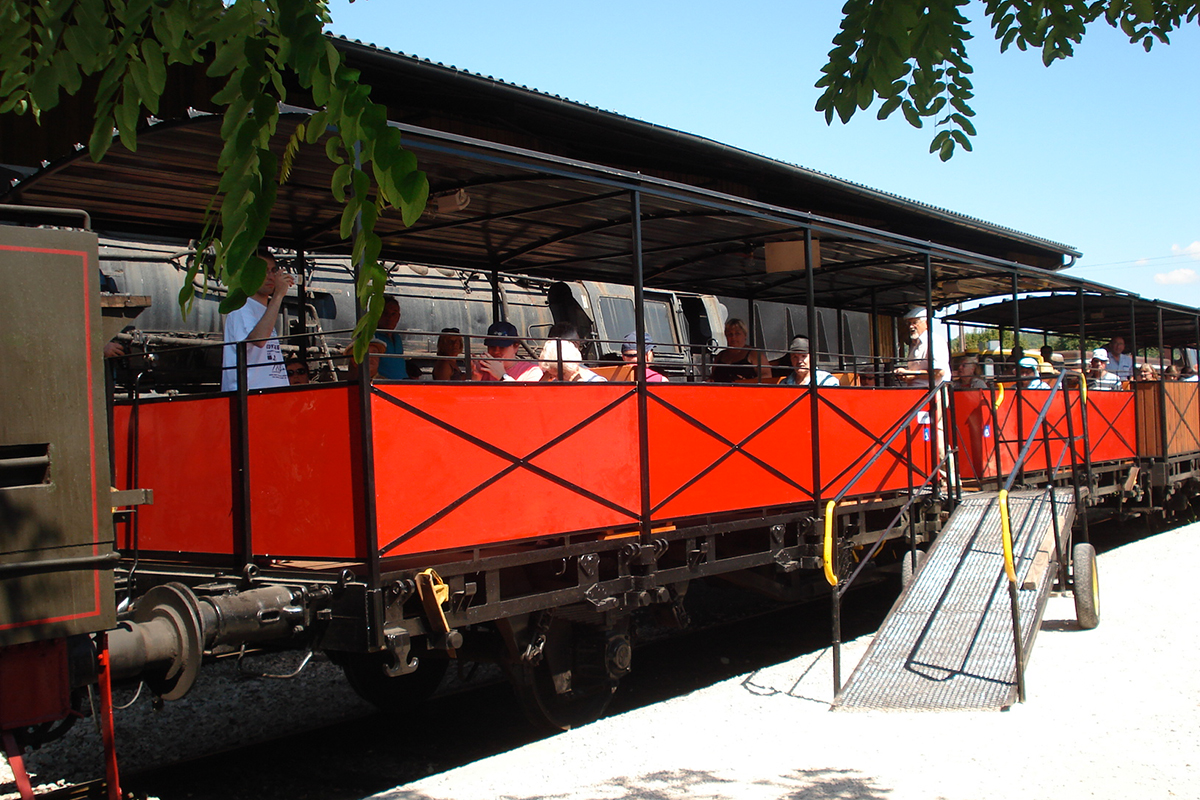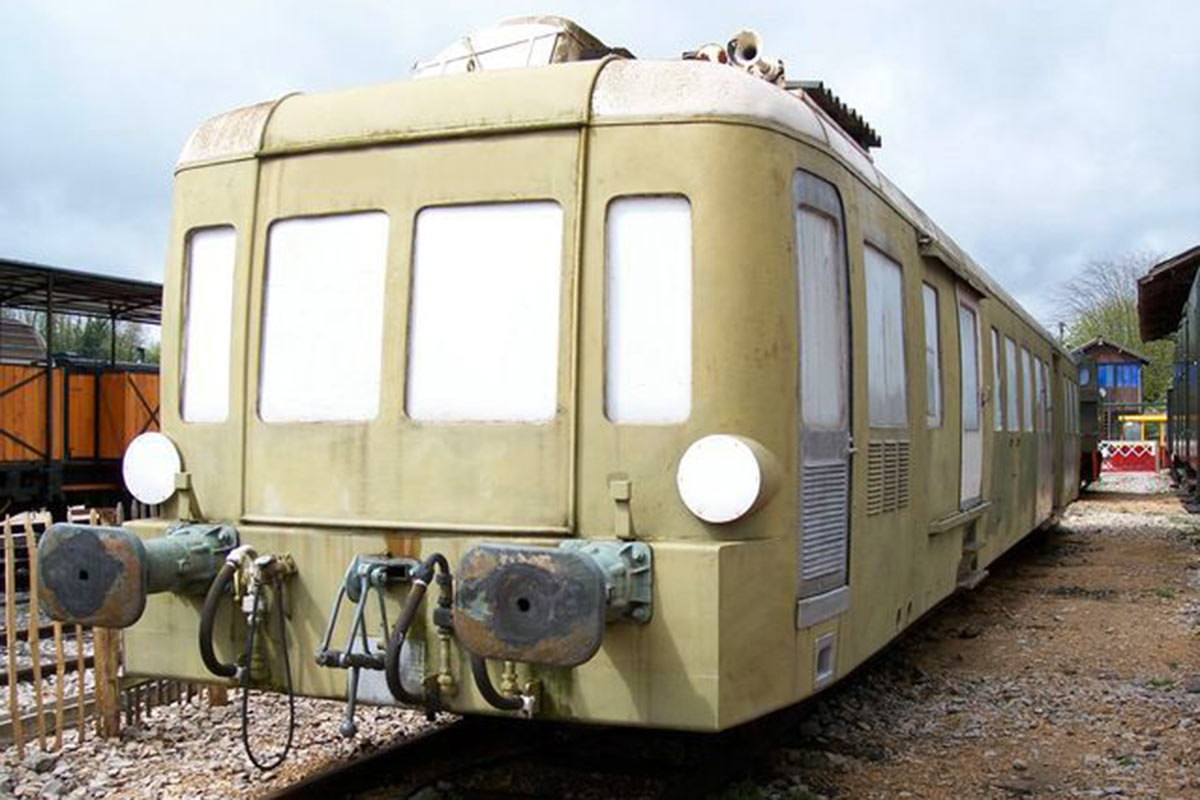Discover our steam locomotives, diesel locomotives and our semi-open carriages.
Sit back and enter the world of rail of Tourist Railway of Haut-Quercy!
040 T 17 SACM 
P: 800 HP – Weight in working order: 64 tons
Built in 1927 in Eastern France by the Society Alsacienne de Constructions Mécaniques (SACM) to Graffenstaden, and assigned to cokig plant in north west France.
It was bought by the CFTHQ in 2010. After restoration work, she was used on our line in 2012.
030 T N°4 – Trambouze 
This locomotive was manufactured by the factory Schneider in Creusot (France).
Built in 1921 to the same 1891 model as her sisters: “Future”, “Hope” and “Progress”, it took its name from the stream that runs through the village. It ran between Cours (69) and St Victor on behalf of the Cours to St-Victor Railway Company .
Withdrawn in 1961, it was then bought by Roger Bras to Espalion (Aveyron), who lovingly restored it. Mr. Bras would have loved to see her run at Martel, but after he died his family was chose our Association to preserve “the Trambouze.”
The “Trambouze” is on display in front of our station at Martel.
150 Z N°503661 
This 1938 German steam locomotive was formerly assigned to the Berlin Engine Shed. Serviced in 1994 it was virtually unused since it was stored in a tunnel where unfortunatly it was stripped ot some parts. It arrived in Martel in June 20, 2007.
This locomotive symbolizes the history of steam during World War 2. It completes the locomotive collection of the Association whose purpose is the preservation and restoration of installations and trains.
Railcar « Picasso » X 3968 (Série X 3800)
Introduced in 1956, it transported passengers until 1987.
The nickname “Picasso” was given by the railwaymen as this railcar with its offset cab is a bit like the distorted faces in the paintings of the famous painter. Donated by the Aveyronnaise Association (CFTA) in 2003.
Waiting to be restored.



